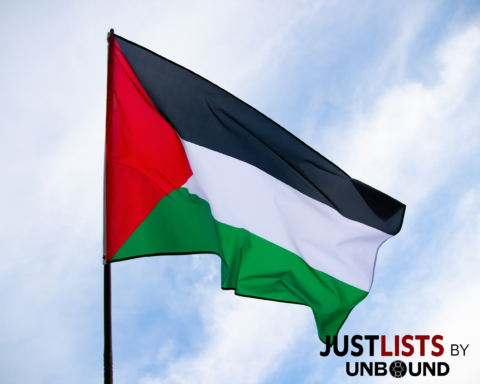Mosaic of Peace, Day 10
Last night, multiple members of our group woke to the sound of fighter jets. The IDF was coordinating a strike on Iranian-affiliated military bases in Syria, responding to a (as of initial reports, casualty-free) strike on the Golan Heights. The Golan Heights attack itself was anticipated by the IDF, and came immediately following President Trump’s announcement about moving the U.S. Embassy to Jerusalem.
With those military planes flying overhead last night, the immediacy of the need for peacebuilding came into new focus. In this context, we met at Sindyanna of Galilee—an Israeli-Arab joint business which emphasizes “enhancing Arab-Jewish cooperation, promoting Fair Trade, creating economic opportunities for Arab women, and assisting local growers and producers.”
We were greeted warmly at Sindyanna, with crackers, oil, za’atar and honey to tide us over until a fabulous meal. It did not take long to realize that this was easily the place with the most seamless integration of Arab and Jewish women we had seen in the Holy Land. They weren’t simply “getting along”—they were thriving together in a rare place where Jews learn Arabic and Arabs learn Hebrew. One of our hosts, Nadia, told us the story of one woman who had for some time commuted once a month from Jerusalem just to spend a day contributing to the cross-cultural community of olive oil makers.
___________________________________________
They weren’t simply “getting along”—they were thriving together in a rare place where Jews learn Arabic and Arabs learn Hebrew.
___________________________________________
 Sindyanna also makes a variety of other products. After Nadia had described the careful process of making high-quality extra virgin olive oil, we split into two groups: one to try weaving their iconic baskets, and the other to make a za’atar mix — (“za’atar,” or “biblical hyssop,” is related to our oregano, but in my opinion has an even more wonderful flavor).
Sindyanna also makes a variety of other products. After Nadia had described the careful process of making high-quality extra virgin olive oil, we split into two groups: one to try weaving their iconic baskets, and the other to make a za’atar mix — (“za’atar,” or “biblical hyssop,” is related to our oregano, but in my opinion has an even more wonderful flavor).
It was almost surreal finding ourselves in the warm atmosphere of Sindyanna’s storefront. The contrast with the news was jarring. And, to be clear: meeting with Nadia and her colleagues, while an important step of learning, did not constitute peace-building. Peacebuilding is the work they have already been doing: building relationships that cross lines of faith and ethnicity.
Seeing what they have done, though, was soul-restoring. Here, every day, pieces—that is, people—were being put together into a mosaic of peace. Who knew that peace might smell of olive oil, salt, seeds & herbs?
***
The Mosaic of Peace trip is part of the ministry of the Presbyterian Peace Program. It brings members and partners of the PC(USA) from a variety of backgrounds to Israel-Palestine in order to “experience this remarkable and troubled region, encounter its diverse people, explore its rich history and complex current situation, and engage with those who seek its peace.”
This blog entry and photo were contributed by Henry Koenig Stone, as part of our effort to bring back and share the stories of Mosaic of Peace 2018. The full blog is co-hosted by Unbound and by the Presbyterian Peacemaking Program.





Unbound Social